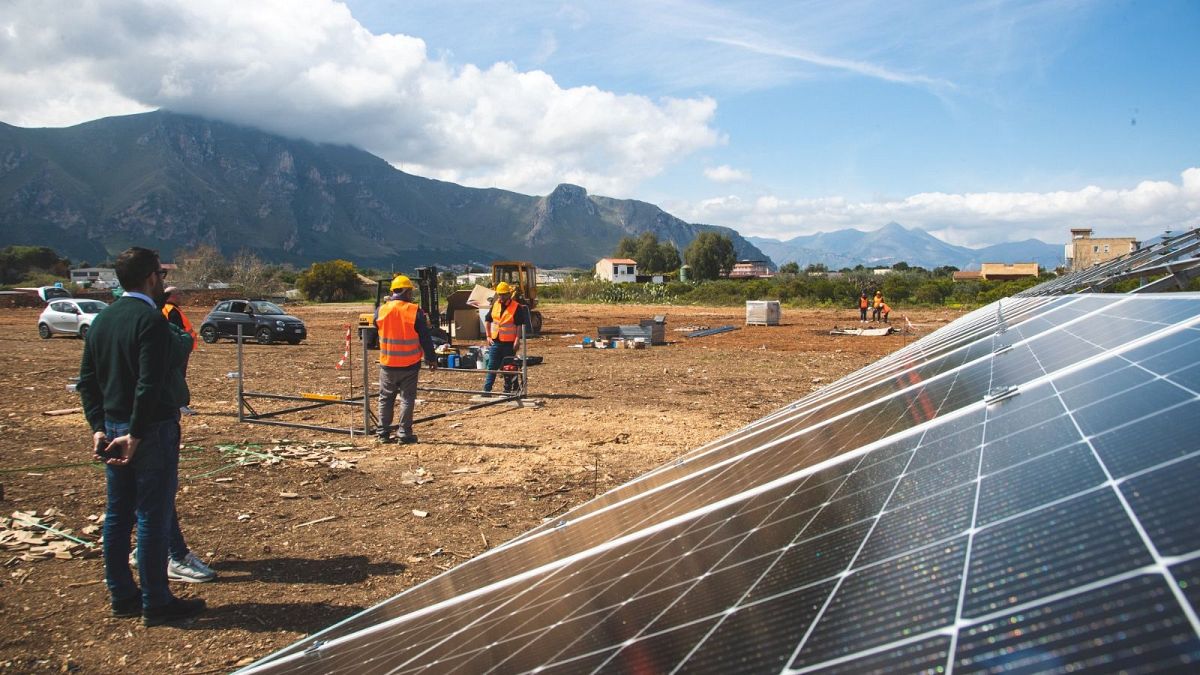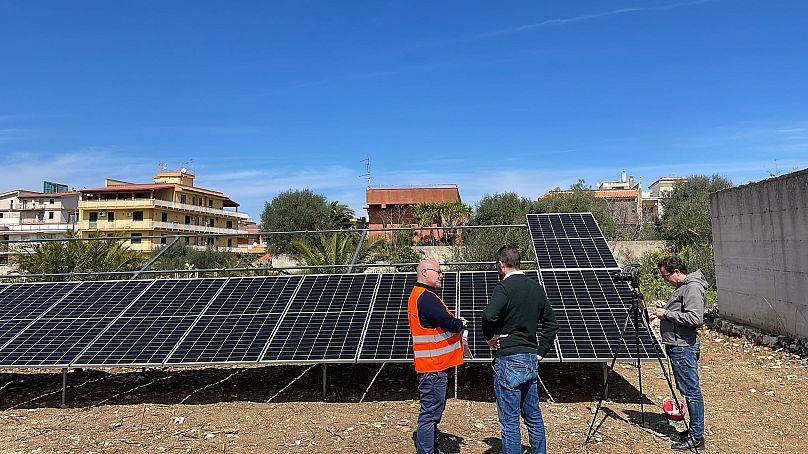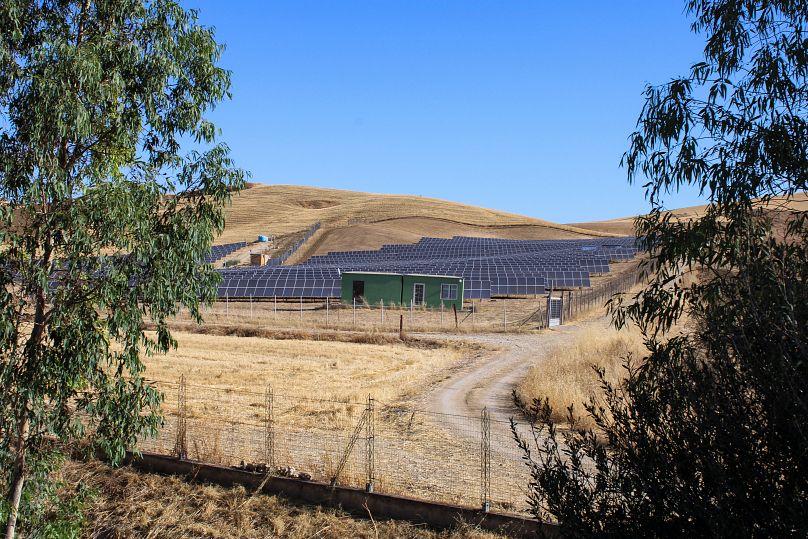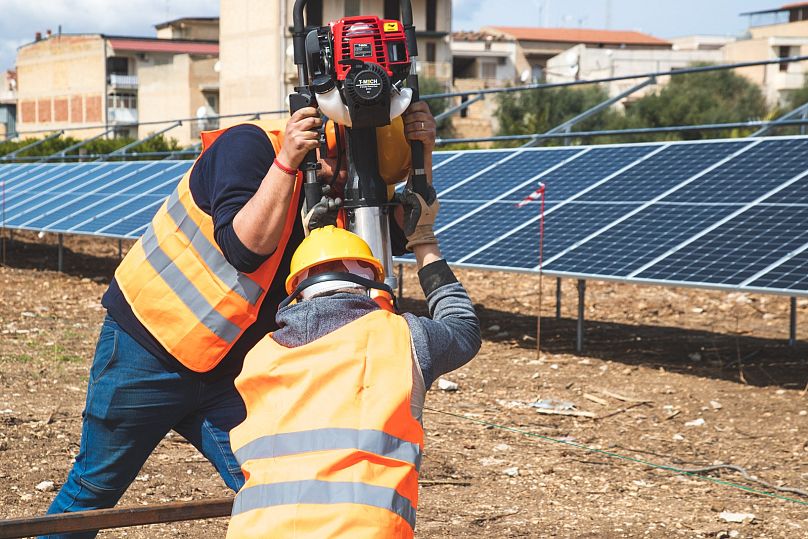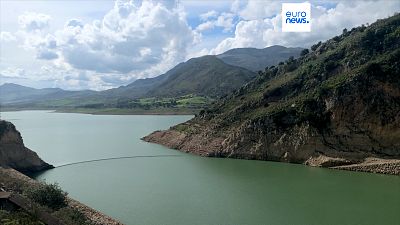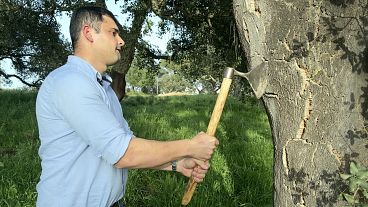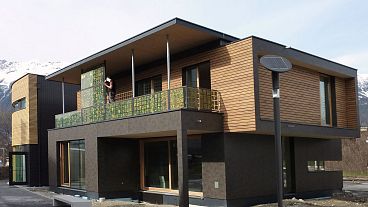The island's governor threatened to stop approving new solar plants until Sicily receives some special benefits.
When Salvatore Cerrito heard the Sicilian governor Renato Schifani vowing to stop new solar panels being installed, he was speechless.
“Our agricultural fields are ravaged by the panels, so we pay a price. Does this activity produce any job opportunity? No: once installed, it is managed at distance. Do they produce energy? No, because it goes to the central state,” Schifani was quoted saying by the news agency Italpress last month.
Cerrito is in charge of the East Palermo energy community on the island, an association of citizens, private business and public bodies producing renewable energy.
In his famous novel Il Gattopardo, Italian writer Giuseppe Tomasi di Lampedusa describes a society in which an omnipresent sun weighs over the decisions of human beings. “The sun showed itself to be the true ruler of Sicily,” Tomasi wrote.
With some reason: three out of ten of the sunniest cities in Europe are located on the island, with Palermo enjoying an average of 340 sunny hours per month.
“This is a great opportunity. And it’s free,” Cerrito tells Euronews Green. “When [EU Commission president] Von Der Leyen said that Sicily can become a clean energy hub for Europe, she was not joking.”
After Italy enabled electricity to be shared and sold through the national grid in 2021, Cerrito and his engineering studio StarPower Health & Contract decided to create an energy community. They opened a call for expressions of interest for building a solar field on the outskirts of Palermo.
Hundreds of demonstrations of interest came back - especially from small businesses such as bars, chemistries, hotels, and from a couple of public museums plagued by abnormal electricity bills.
With 500 members, East Palermo is set to become the largest energy community in the whole island. Their first 850 KWh solar system was built in Brancaccio, an old industrial area in the outskirts of Palermo.
Cerrito was not the only one caught off guard by Schifani’s statement. Trade unions and political opponents protested vocally. They saw solar technology as a chance for a region plagued by scarce economic opportunities to play a key role in the European energy transition.
Despite that, other regional governors followed suit and backed Schifani’s requests a few days later.
Which region produces the most solar power in Italy?
In 2021, Italy announced an informal target of 70 per cent of electricity generation from renewable sources by 2030. To achieve this, clean think tank Ember estimates that the country needs to draw on 65-70 gigawatt (GW) of renewable energy, predominantly wind and solar, over the next few years.
But according to the Solar Italy association, in 2022 the nation’s total photovoltaic power was only 25 GW, produced by over 1.2 million power plants. Most of these are small size solar home systems.
The country connected 2.48 GW last year, a 164 per cent growth compared with 2021. This new capacity could power up to a million houses per year. Yet Italy is still falling behind its goal.
Due to the abundance of sunlight, Sicily could be Italy’s ace up the sleeve. But at the end of 2022, it had only 1,742 megawatt (MW) of solar power installed - less than dimmer, northern regions like Lombardy (3,149), Veneto (2,484) or Emilia Romagna (2,512).
Sicily’s sun rush
“In recent years, Sicily has closed the gap with other regions,” says Vito Campanella, local coordinator for Solar Italy.
“As of now, we have requests for connecting up to 70 GW to the grid.” Considering that Sicily’s whole high voltage grid will be able to deliver up to 10 GW by 2030, investments are growing faster than the current distribution capacity.
Though the demand is exciting, Campanella says most of these requests are outdated and Sicily’s solar potential is being held back by a slow implementation process.
“Getting the compulsory permits takes between three and five years, then another two or three years for actually building your facility. In this time, technologies could change and companies could fail,” he tells Euronews Green.
Since the pandemic, bottlenecks in international trade have also posed a significant challenge to setting up new plants. So far, only 1.2 GW out of these requests turned into fully functioning projects.
As the sun fever kept rising, so did concerns from local residents. In 2021, a thousand protestors gathered in the 6,000-people town of Canicattini Bagni, protesting against the construction of a 67-MW solar system on a nearby agricultural field.
Why are some Sicilians protesting against solar?
Located 23 km from Syracuse, Canicattini Bagni is part of the Iblei, Sicily’s biggest national park encompassing natural reserves and some special conservation areas. The town has high hopes of enjoying the touristic bonanza that made Syracuse internationally renowned.
“We are trying to give a new role to a community that faces the concrete danger of desertification,” mayor Paolo Amenta tells Euronews Green, “but this cannot include such a photovoltaic expanse.”
Amenta was convinced that the project was unlawful, so he brought it to the local administrative court - and won.
“We must produce renewable energy in industrial areas, in abandoned mines and landfills and then on fallow fields, but only abiding by the regional regulation,” Amenta says.
However, the Italian foundation for sustainable development estimated that solar modules in Sicily covered an area equivalent to only 0.11 per cent of the agricultural land.
“The idea that photovoltaic panels disrupt our landscape is a false myth obstructing our green transition,” says Andrea Barbabella, head of the climate and energy sector.
Giving Sicily something back
Part of the problem is that the local government has yet to approve a regional law to define which zones are suitable for installing new solar projects.
Regional councillor for energy and public services Roberto Di Mauro tells Euronews Green that they will present the law by mid May. Solar investments will be directed mainly towards abandoned areas, mines, quarries and unproductive soils.
However when Schifani slammed solar projects, he had more than just green fields in mind. The governor wanted a fair slice of the energy pie for Sicily.
“Schifani’s statement was rather politically strong, but the president wanted to shed light over the issue,” Di Mauro says.
The councillor believes that many investments will mainly deliver energy to the richer regions of northern Italy. So his administration wants something back, such as a cut in the electricity bills paid by the island’s residents.
“We don’t ask this for the benefit of the regional government, but only for our citizens,” he says.
According to Solar Italy, electricity in Sicily traded with a price close to zero during the daytime in March. But even if solar is cheaper than other energy sources, bills are always estimated on a national average.
That means that people in Palermo pay the same price as those in Milan. The local government believes that Sicilians deserve a reduction, based on a local estimation, instead of a national one.
So far, Schifani’s gamble is paying off. The governor discussed a strategy for compensating regions hosting photovoltaic fields with the Italian minister for the environment and energy security on 21 April.
Not everyone is happy with these tactics, though. Since small solar plants need no direct authorisation from the regional government, Schifani’s statement did not impact the activity of small energy communities like East Palermo.
But after the public announcement, Cerrito received calls from worried investors.
“We [Sicilians] are always perceived as unreliable, as those who keep on changing the rules,” he says sadly. “From Palermo to Catania, there are kilometres of sunny fields with no farming activity at all. It’s humiliating, we could do so much more.”
This story was supported in the framework of the European Excellence Exchange in Journalism project, run by Free Press Unlimited.
